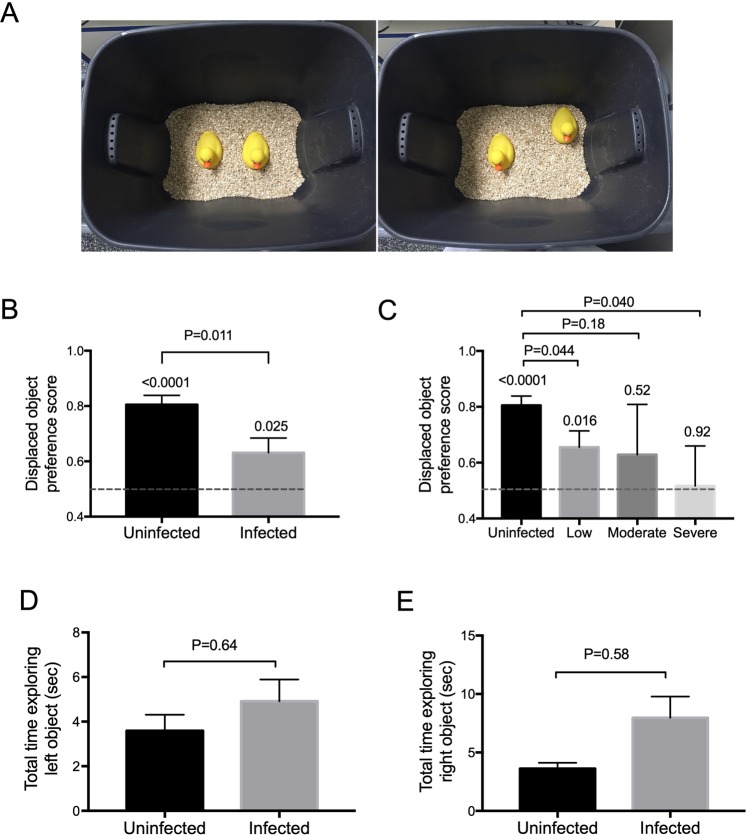Figure 2.
Displaced Object Recognition (DOR) task. (A) Experimental set-up. Hamsters were habituated to the testing environment, which constituted of a black plastic bin with identical objects, shown in the left, for three consecutive days to allow formation of spatial memory. On the day of testing, hamsters were familiarized to the testing environment again. After a period of rest, one of the two identical objects was displaced to a corner that was randomly determined, shown in the right. The hamster was then assessed for their ability to detect the change in the environment, which was recorded for playback and scoring at a later time. (B) Infected hamsters performed worse than uninfected hamsters in the DOR task. The dash line here and in (C) represents displaced object preference score of 0.5 or equal preference toward displaced and non-displaced objects. The P value above each individual bar represents a comparison of the performance of each group relative to no preference (displaced object preference score of 0.5). Infected hamsters showed a weaker preference towards the displaced object and performed significantly different when compared to the uninfected hamsters (p = 0.011). (C) Severity of performance deficit broken down by infection burden. Hamsters were divided into 3 infection burden groups: low, moderate, and severe. The P value above each individual bar represents a comparison of the performance of each group relative to no preference (displaced object preference score of 0.5). Both the moderate and severely infected hamsters showed no preference toward the displaced object. The low infected group showed a weaker preference towards the displaced object relative to uninfected animals. Infected animals in the low and severe infected groups performed significantly different when compared to the uninfected hamsters (p = 0.044 and 0.040 respectively). (D) Both uninfected and infected hamsters spent similar amount of time exploring the objects. The amount of time (in seconds) each hamster spent exploring each object during the familiarization phase was calculated during the first 10 minutes of the task. There was no significant difference in time of exploration between infected and uninfected animals for either object.

